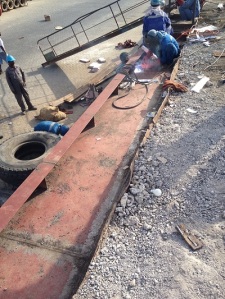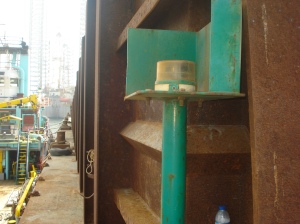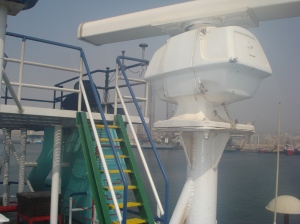After completing a survey of a barge and analysing the causes and nature of the damages alongside estimating the possible costs of repairs; it is beneficial to discuss barge stability as well as proper procedure following the damage circumstances.
According to Towmasters, (2009) there exist 3 common collision scenarios for barge damage where the vessel itself will experience different situations; Head-on/Nearly Head-on, Sideswipe/T-Bone and Bottom Damage. A head-on and nearly head-on collision is considered to be the most favourable encounter compared to other scenarios as this way the kinetic energy of the collision is better absorbed since barges keep ballast tanks on bow and sterns empty; protecting vital zones. Flooding of the voids will affect longitudinal but not transverse stability where the bow will increase in draft but capsizing is unlikely.
The Sideswipe/T-Bone collision is the least-survivable out of the 3 as this is the same type of collision that sank the Titanic by opening the vessel length wise. Loss of 2x adjacent compartments on the same side warrant and speed up sinking. Finally, the Bottom Damage collision occurs from unintentional grounding or running over a submerged object; outcomes to this can be variable ranging from severe degradation of longitudinal hull strength which cause breakage on slight mishandle.
Since the physical build of a vessel makes a difference in the outcome of a collision it is worth discussing the construction details. The vessel we surveyed, therefore was concreted with cement on the main deck within cargo areas along with being fitted with solar-type side and stern lights.
The damages on the barge were mostly to the external parts where the wall was dented inwards along with the damage having a surface area of 3.5×1.5 meters. The collision took place when the tug towing the barge was in an overtaking situation. However, the error here was due to the collided vessel disappearing from the radar due to obstruction of fittings above the mast of the tug.
While marine radars are essential onboard vessels they come with their own faults and conditions which maximise damages resulting from said faults; depending on the technical and environmental aspect of operation. In this case, the radar fault here was due to clutter caused by the mast superstructure where the beam was obstructed by solid objects which in-turn cause echoes. Those echoes vary in size and intensity where without proper procedure can result in loss of targets; creating another possibility for a collision.
Leading back to the barge itself, the collision cannot be placed into a single category that was mentioned above but instead, creates its own form of collision which affects not only barges but any vessel since radar equipment is essential. However, this form of collision starts with onboard equipment placement as well as the superstructure distribution.
A typical radar emits radio waves that travel and reflect from solid surfaces therefore travelling backwards to the receiver to show the crew a representation of activity at sea; detecting ships, weather formations, other vehicles and even guided missiles. However, as mentioned above, obstruction is radar’s biggest foe therefore this collision could have been a result of the waves not travelling enough distance to pick up any movement; being reflected from equipment and structures on-deck.





